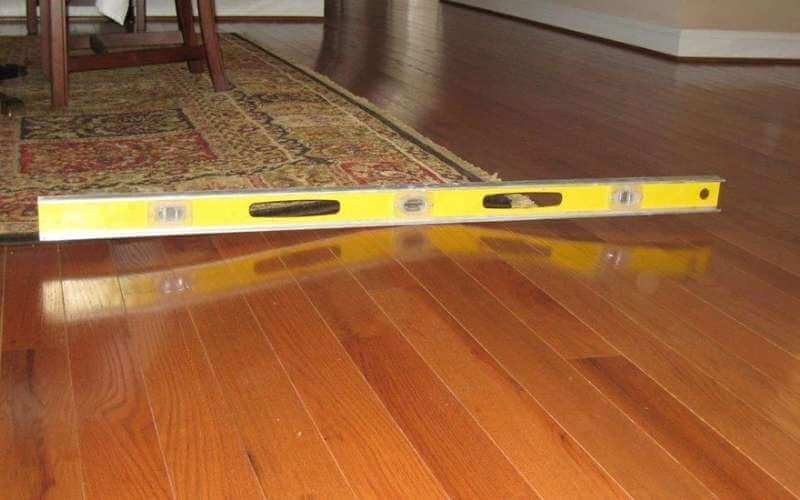A crowning hardwood floor can be frustrating, especially when you continuously scrape your foot on it. If you’re faced with such a challenge, you will be wondering how to fix it.
This article clearly explains how to fix crowning hardwood floors using a belt sander.
What is hardwood floor crowning?
Crowning on the hardwood floor occurs when moisture penetrates the wood fibers. This will cause a slight bow, making the center of the board higher than the edges.
It might not look so bad but can be discomforting if it interferes with normal foot movement. The great news is that you can fix most floor crowning using an ordinary belt sander. Let’s look further into this.
Read: How to sand floor with hand belt sander
How to fix crowning hardwood floor using a belt sander
Table of Contents
Below are easy steps to follow to fix crowning hardwood floor using a belt sander.
Step 1: Identify the cause of moisture
This is the first step you should take while fixing a crowning hardwood floor. Once you take care of the cause of the moisture, the wood is expected to dry up by itself over time.
Step 2: Put a fan in the room
Just in case you want to speed up the drying process, you can turn on your fan and leave it in the room for about 3 days straight.
Ensure the heat is up to 72 degrees. This will help dry up moisture from the floor.
Step 3: Place a piece of clear plastic on the floor
After completing step 2, remove the fan. Now place a large piece of clear plastic over the crowned area. Leave it there overnight. If you notice moisture under the clear plastic by the next day, it signifies that it’s still wet.
At this point, you may need to repeat step 1. Ensure you use the clear plastic to check every 24 hours until you no longer notice moisture under it.
Step 4: Put an 80-grit belt on a 4-inch-wide belt sander
Put the belt sander on the largest part of the crown. In an oval-shaped circular motion, start sanding back and forth, increasing the sanded area as you move. Repeat this until the crown is gone.
Step 5: Use a straightedge on the sanded area
Place a straightedge perpendicular across the sanded area. Then pull the straightedge from side to side. If you can see daylight under the straightedge, it means you need to continue sanding until it can move easily on the floor.
Step 6: Sand the area until it’s smooth
You can use an orbital sander equipped with 100-grit sandpaper to sand the area until it’s smooth. Then sand it again, but this time, with 180-grit sandpaper.
Finally, use an appropriate stain or polyurethane to refinish the floor. This will make the sanded area match the existing flooring.
Why is my hardwood floor crowning?
Crowning occurs when the boards are exposed to a moisture imbalance over a long period.
Previous floor cupping may also be the cause of floor crowning. A cupped floor requires a lot of time to dry. If your floor is sanded while the boards are still cupped, only the raised edges of the board will sand off.
Eventually, the floor will dry up and return to normal moisture content. You may notice that the sanded edges are lower than the center of the boards.
Other common problems with hardwood floors
Aside from crowning, there are other problems associated with hardwood floors. They include,
1. Cupping
This occurs when the edges of a board are higher than its center. It is also caused by moisture and is mostly the exact opposite of crowning.
Read: Laminate over tile problems
2. Buckling
This occurs when the wood flooring pulls up from the subfloor, lifting several inches in a place or more.
Read: How to fix wood floor bukling
3. Cracks on boards
During winter, boards can lose their moisture content, causing them to shrink and crack.
Read: How to fill cracks in wood floor
Conclusion
Having understood how to fix crowning hardwood floor, note that crowning can permanently damage your hardwood floors. We strongly advise you to fix it as soon as you notice it.
As the saying goes, “prevention is better than cure,” this also applies to hardwood floors. Therefore, we recommend always using a moisture meter to detect moisture problems before they occur.

